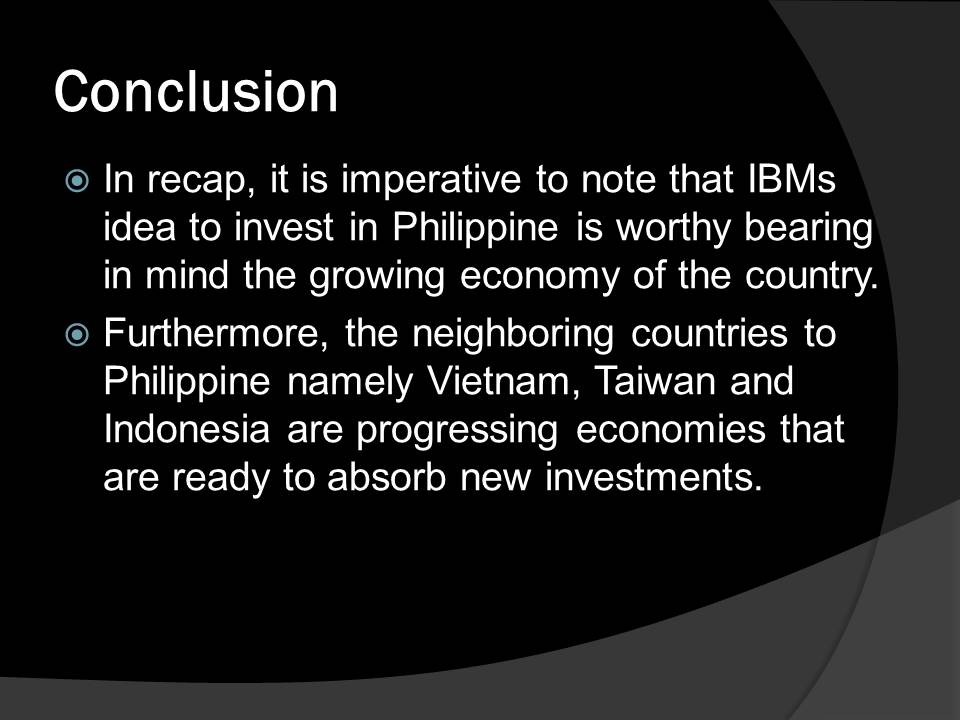Introduction
- The International Business Machines (IBM Inc.) is a Multinational Corporation with a global presence in more than 160 countries.
- It specializes in the provision of high-end computer hardware and software parts besides offering consultation services in Information Technology.
- The organization started as a Tabulating Machine Company way back in 1896 and has witnessed tremendous growth during the one hundred years of operation.
As part of its expansion strategy, IBM is considering investing in Philippines. The organisation’s corporate culture in sales and marketing is profound and by opening an investment ground in Philippines, it will indeed increase its market share in computer, IT and technology. The report gives a detailed overview of the economic profile of Philippines and her neighbours as well as management issues which IBM will have to face as it ventures into an additional foreign investment.

Economy of Philippines
- Philippine is a Southeast Asian country and bordered by Vietnam to the north, Vietnam to the west and Indonesia to the south with Pacific ocean to the east.
- According to the statistics provided by EconomyWatch (2010), the Gross Domestic Product (GDP) of Philippine experienced a meager growth of less than one percent in 2009.
- However, the 2008-2009 world economic meltdown was resisted quite well by this economy compared her neighbors who faced a myriad of unfriendly economic factors such as security issues amid the impacts of global recession.
Besides, the country does not depend heavily on exports in addition to the ability to adjust its domestic consumption. The Philippine economy also weathered the harsh economic times due to foreign remittances from its own citizens working abroad besides the business process outsourcing industry which has witnessed impressive growth in the recent past. In retrospect, Philippine has had an average economic growth of 4.5 percent in a nine year period (EconomyWatch, 2010). Unfortunately, this growth has not been reflected in the poverty index of its citizens owing to consistent growth in population. Lack of equity in income distribution has also been cited as one of the reasons behind high poverty levels.
The actual GDP growth rates:
- 0.9% -(2009)
- 3.8% -(2008 )
- 7.1%- (2007 ) (EconomyWatch, 2010).
- By 2009, the workforce stood at 37.89 million
In revisiting the economic profile of Philippine, it is imperative to note that by 2008, it was recorded as the 47th well established economy in the world, making it a viable ground for investment (EconomyWatch, 2010). Peso is its currency unit. The backbone of Philippine’s economy has been agriculture with a slight shift to industrialization in the recent past. Currently, the services and manufacturing sector is supporting the economy to a larger extent and is the strongest sector of the economy. A work force of about 38 million runs the Philippine economy. The foreign currency reserve towards the close of 2009 was 36 billion US dollars.
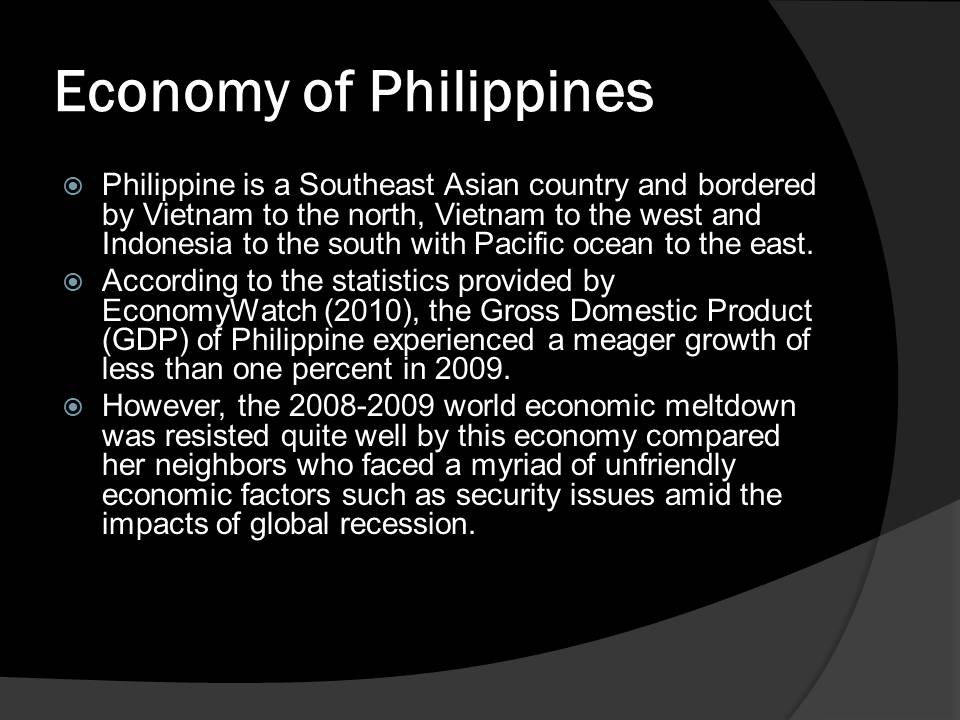
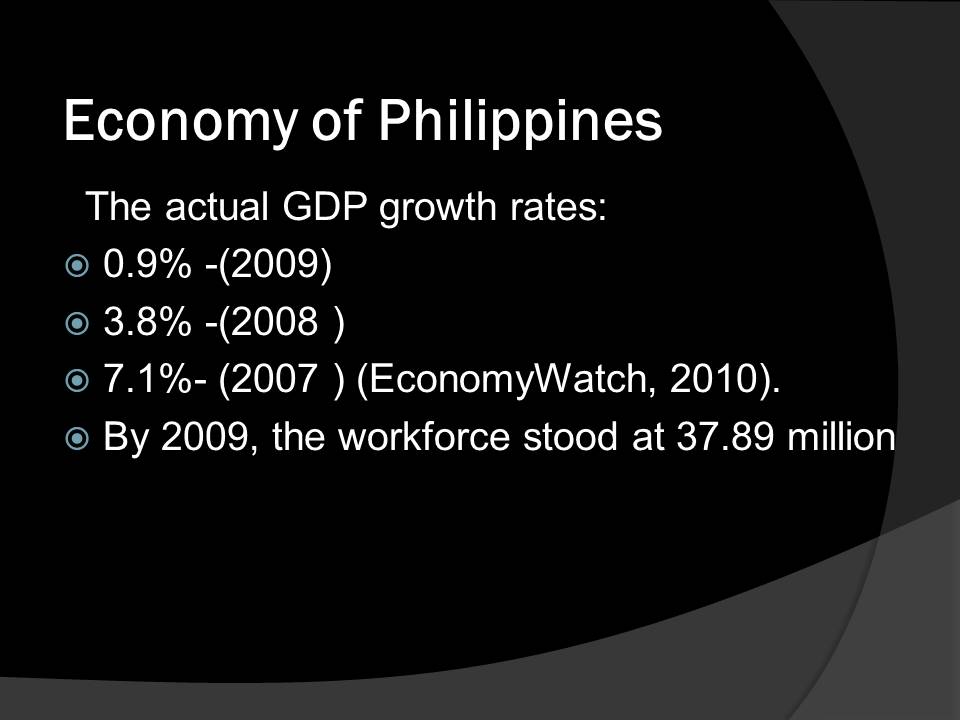
The Economy of Vietnam
GDP Growth
- 241.7 US billion dollars in 2008)
- 227.6 US billion dollars in 2007)
- 209.8 US billion dollars in 2006 (EconomyWatch, 2010)
- The process of international integration and liberalizing the financial sector has been rigorous in Vietnam from the beginning of 2001.
By 2007, the total export volume of Vietnam to United States had sharply risen by 900% (EconomyWatch, 2010). Besides, the AFTA membership has seen the country enter into bilateral trade agreements thereby boosting its foreign exchange earnings. The financial reform process in Vietnam coupled with its membership in World Trade Organisation has equally boosted trade volume of the country. Agriculture (rice growing) has been the main economic drive of Vietnam.
By 2008, the GDP growth in terms of purchasing power parity had topped 241.7 billion dollars. This was higher the previous year when the growth was recorded at 227.6 billion dollars.
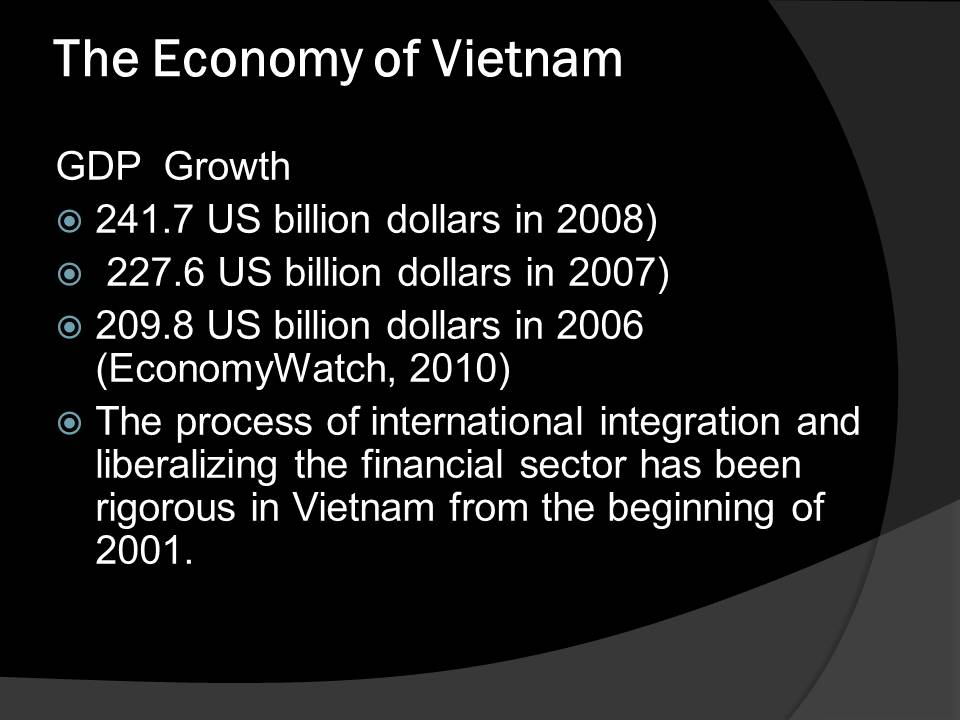
The Economic Profile of Indonesia
GDP –actual growth rate:
- 4.4% in 2009
- 6.1% in 2008
- 6.3% in 2007
- The GDP growth as per capita income was estimated at 4,000 US dollars, a slight increase from 3,900 US dollars the previous year (EconomyWatch, 2010).
As a G-20 member, Indonesia boasts of a growing and vibrant economy. The government has an upper hand in the running of major business enterprises. For instance, the government overseas the administration of important commodity prices (EconomyWatch, 2010). This government support has seen the economy grow by leaps and bounds. Nonetheless, domestic consumption has been instrumental in the growth of Indonesian economy. This growth was however decelerated during the 2007-2008 global economic recession although global phenomenon did not hinder impressive economic performance of Indonesia.
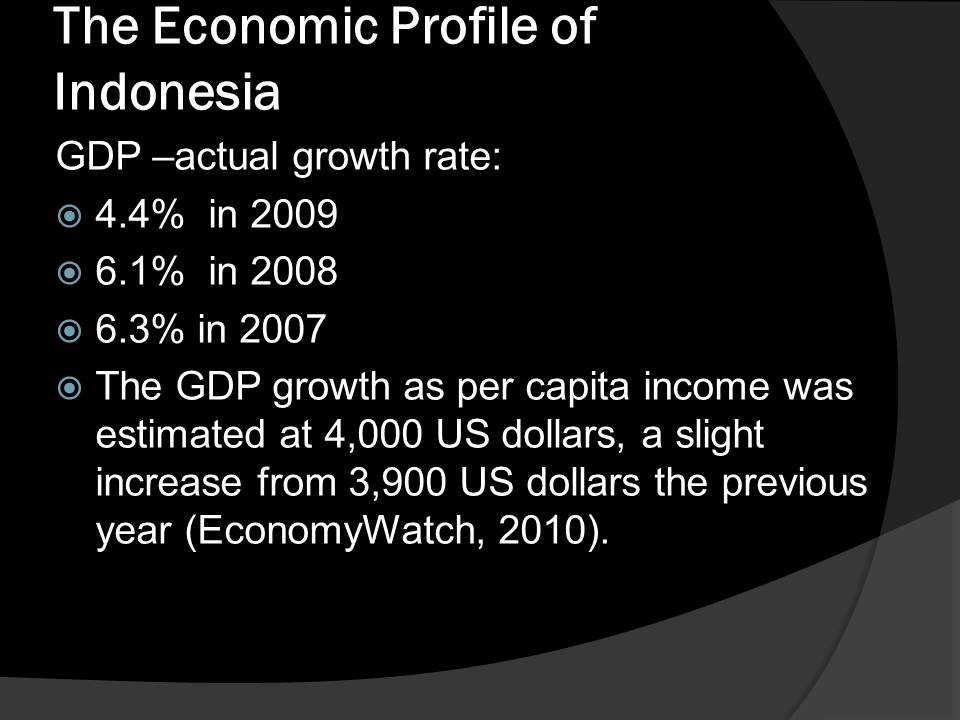
Taiwan Economy
- The main economic drive of the Taiwan economy is tourism.
- The tourist sector is the chief foreign exchange earner of Taiwan.
- Besides, Tuna fishing has also been generating significant revenue for the country.
- In 2007 alone, a total of 32.88 US dollars was transacted as exports. The 10.7 million workforce in Taiwan is a major impetus towards the growth of GDP (EconomyWatch, 2010).
Other economic activities include manufacturing in small scale as well as farming activities. The government is gradually releasing itself from economic control. For the last three decades, the country has posted an impressive 8 percent growth of its economy (EconomyWatch, 2010). In addition, Taiwan’s foreign reserves have been ranked the fourth largest in the world. The main contributor in GDP growth is the services sector as it dominates about 70 percent of the total growth.
The foreign trade has resulted in rapid economic growth of Taiwan. Much of this trade is occasioned by bulky industrial exports. It leads in the manufacture of computer chips as well as equipment used for networking. The arable land in Taiwan is quite small (about 25%) and this has hindered growth in agriculture.
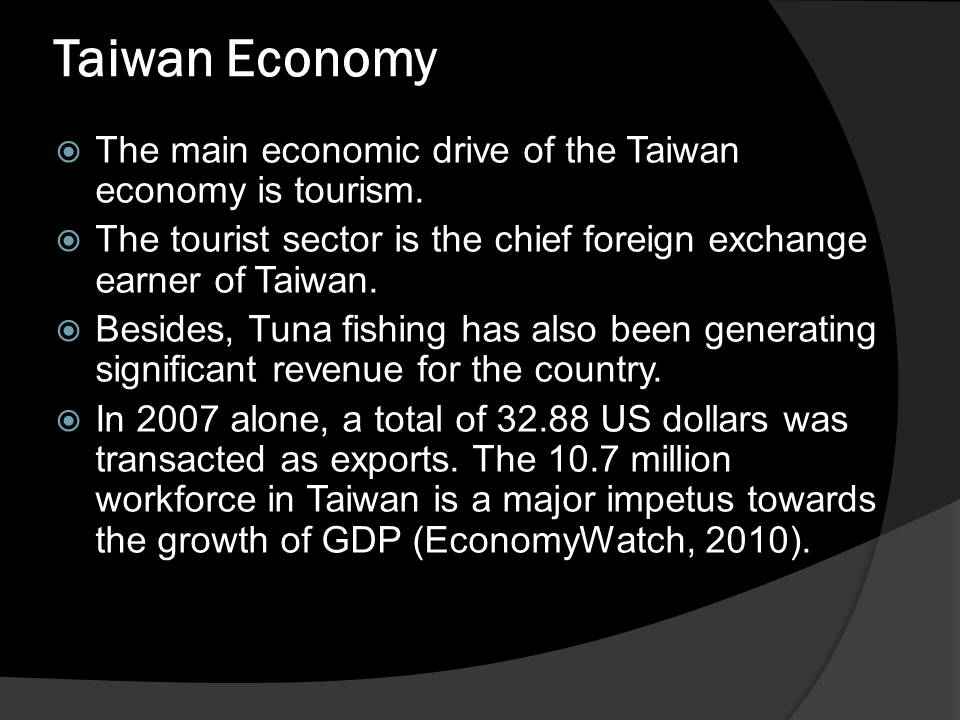
Comparing strengths and weaknesses
- The various strengths in each of the countries do complement each other because none of the countries is economically independent.
- The services and manufacturing sector in Philippine is the backbone of the economy (EconomyWatch, 2010)
- In Taiwan, the main economic drive is Tourism (EconomyWatch, 2010).
- Hence, the services and manufacturing sector in Philippines can support tourism needs in the neighboring Taiwan.
- These are complementary rather than competitive roles.
- Vietnam mainly relies on the cultivation of rice
- Hence, its economy is well supported by agriculture.
- Therefore, the Vietnamese neighbors can benefit from this rice production as it supplements it service and manufacturing needs from Philippines (EconomyWatch, 2010).
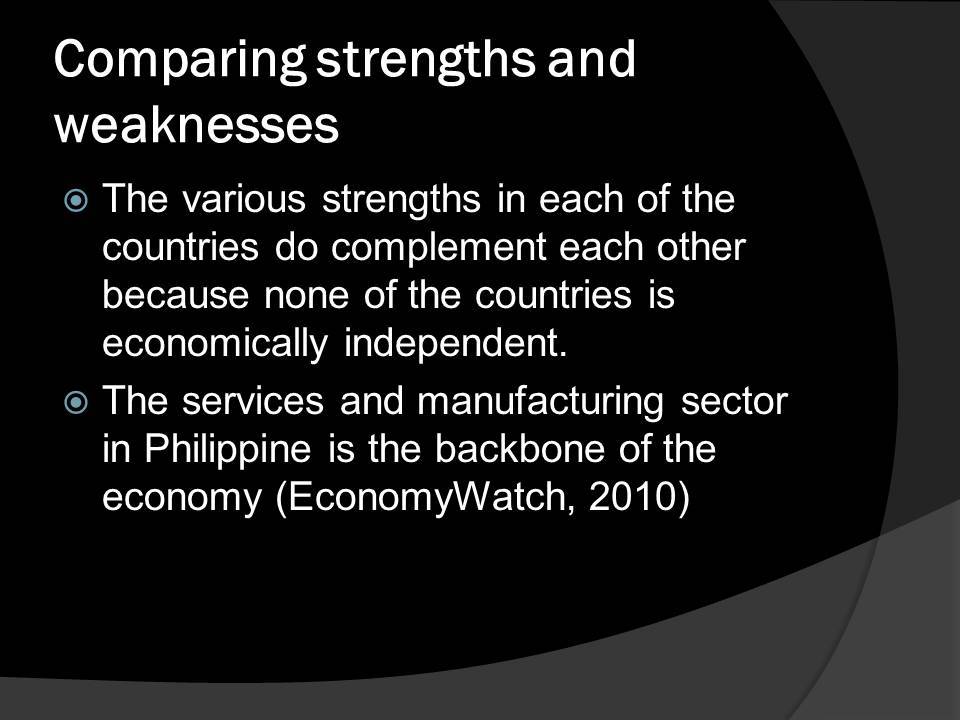
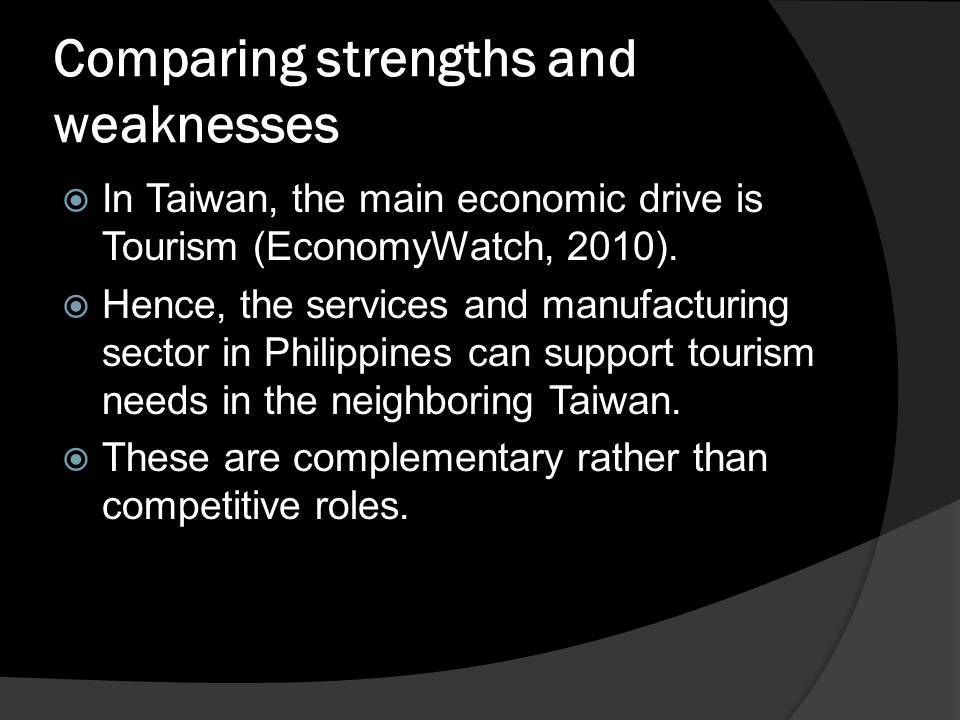
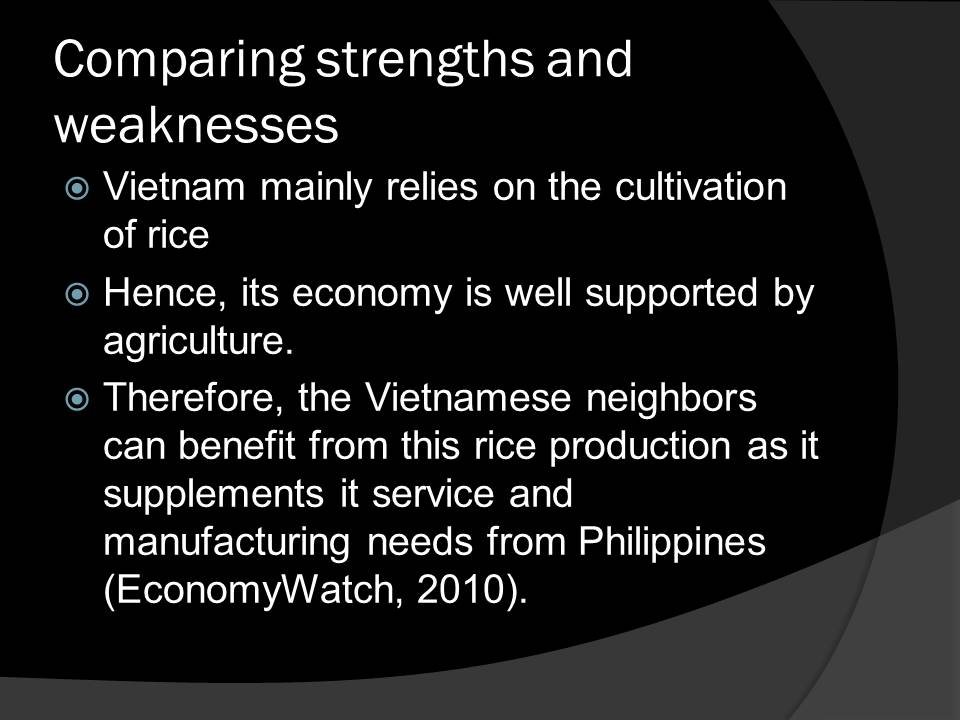
Management Issues
- There are quite a number of management issues that IBM will have to address even as it ventures the Philippines market.
- Firstly, IBM will have to seek registration of the organisation in the host country.
- The Securities and Exchange Commission of Philippines is responsible for such registrations.
- Depending on the location of the project, IBM will have to secure the appropriate registration certifications from the respective government agencies (Raj & Raj, 2009).
- Secondly, IBM will require both a qualitative and quantitative risk assessment report of Philippines to assess the risk level of carrying out business in the country (Raj & Raj, 2009).
- This will assist in strategizing change management process in the organisation.

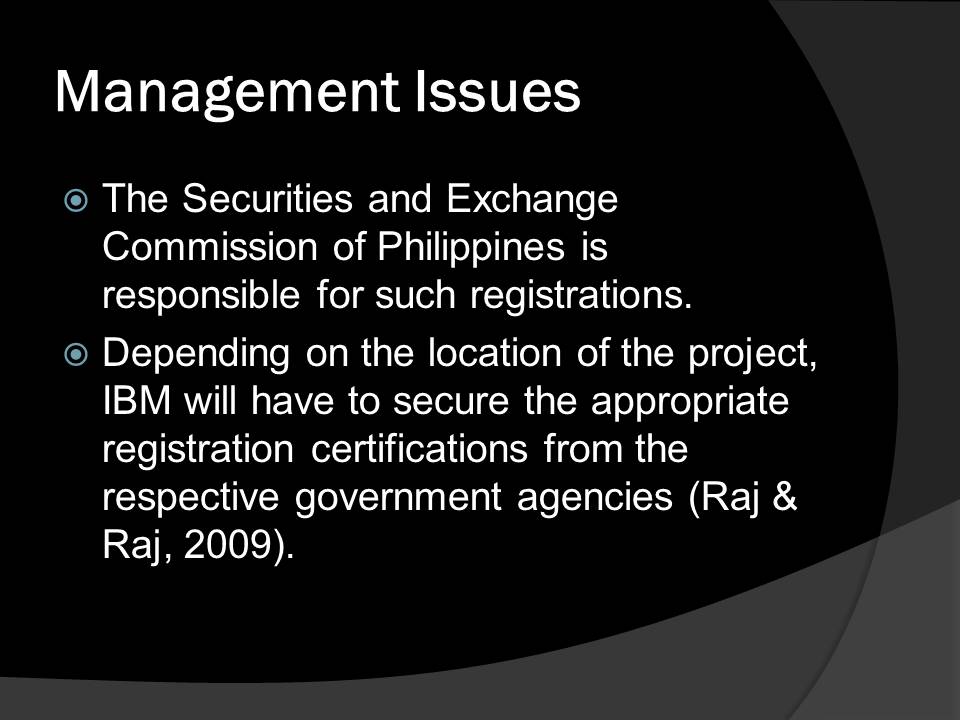
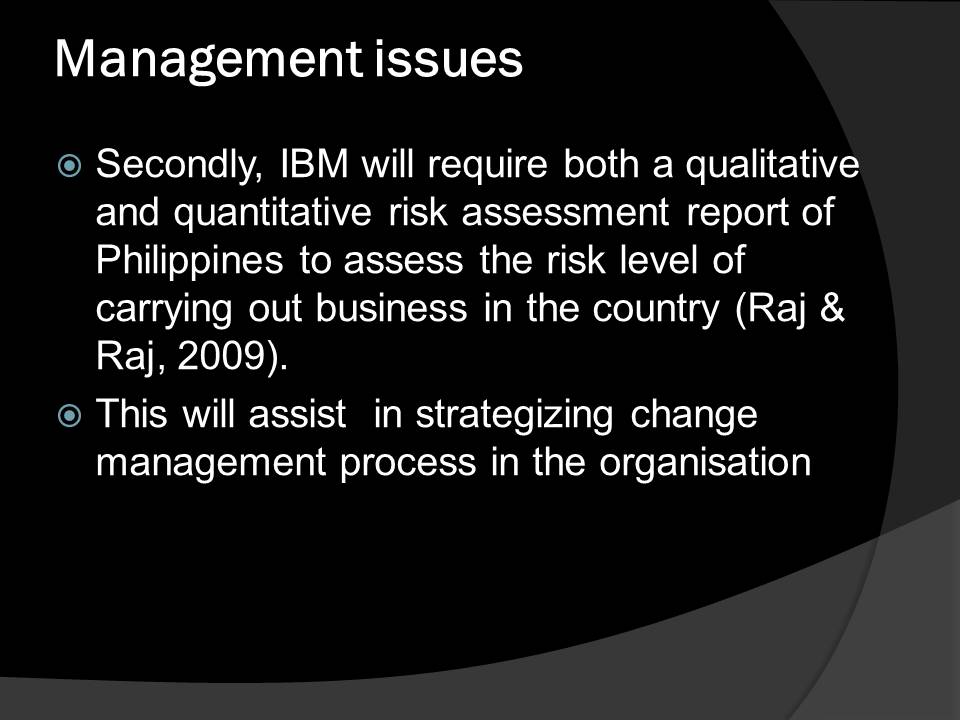
Conclusion
- In recap, it is imperative to note that IBMs idea to invest in Philippine is worthy bearing in mind the growing economy of the country.
- Furthermore, the neighboring countries to Philippine namely Vietnam, Taiwan and Indonesia are progressing economies that are ready to absorb new investments.
